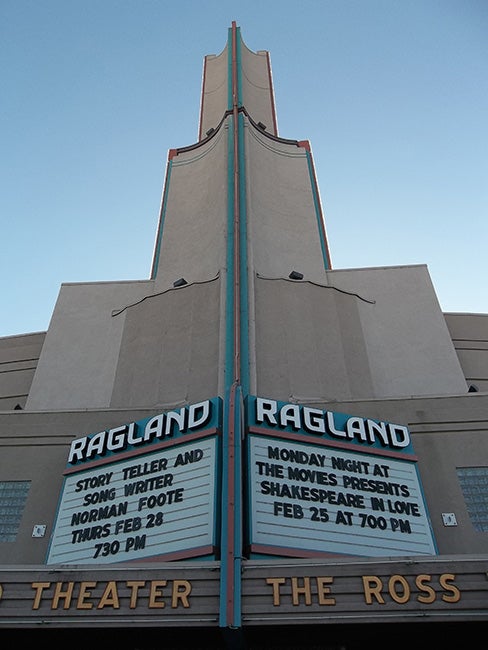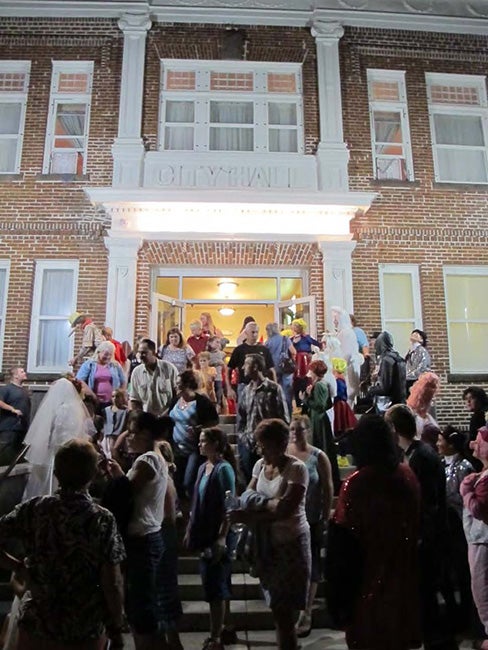A new report on the condition and needs of Oregon’s historic theaters reveals them as potentially significant economic engines as well as cultural touchstones in communities small and large. But they’re challenged by deferred maintenance and other financial and organizational needs, for which the report provides specific recommendations.
Nearly a year of research resulted in “Oregon Historic Theaters: Statewide Survey and Needs Assessment.” The report reveals that the many shuttered or struggling theaters—former cultural and economic linchpins in their communities—remain potential catalysts for downtown revitalization.
The report was produced by five University of Oregon graduate students working with UO Community Planning Workshop Program Director Robert Parker. They documented the condition and needs of the theaters and outlined recommendations for increased success.

Above: Broadway Theater in Malin, southeast of Klamath Falls. Image courtesy Basin Youth for Christ.
The survey identified four key challenges facing historic theaters: tight finances, aging infrastructure, increased competition, and lack of coordination among owners-operators for sharing opportunities.

Above: Ross Ragland Theater in Klamath Falls.
Photo by Marti Gerdes.
Other findings:
• Fifty-six percent of Oregon’s historic theaters have not been seismically retrofitted, 57 percent do not have automatic fire protection, and 46 percent are not fully ADA compliant.
• The theaters collectively hosted 62,000 events and brought in $23 million in revenue.
• The thirty-six theaters responding to the survey reported a combined $20.8 million in deferred maintenance.
• Thirty-two percent had not upgraded to fully digital projection, necessary to show first-run movies and remain more competitive.
The report recommends: (1) theaters undergo comprehensive structural assessments, preferably by an architect trained in historic preservation; and (2) a diverse coalition of nonprofit and state agencies create a statewide “historic theaters initiative” that offers funding, technical support, access to diverse programming, and a mechanism for sharing information and resources.
A five-year “Action Plan” to address theaters’ needs was begun in August by Restore Oregon, Oregon Main Street, the Oregon Heritage Commission, Oregon Film (the Governor’s Office of Film and Video), Oregon Arts Commission, Oregon Regional Solutions Team, Pacific Power, and the UO’s Community Service Center.
Travel Oregon provided a matching grant for the survey. Match dollars, acquired through efforts by Parker, came from the US Economic Development Administration (EDA) administered through the UO’s EDA University Center. The inventory was conducted between September 2014 and August 2015.
The findings will be formally presented at the 2015 Oregon Main Street conference in The Dalles on October 7.
Read the report on the Oregon Historic Theaters website. View a video about the project.

Above: Elsinore Theatre in Salem, Oregon, was designed by Ellis F. Lawrence, former A&AA dean. Courtesy Elsinore Theatre.

Above: Elgin Opera House in the northeast Oregon town of Elgin. Courtesy Elgin Opera House.

